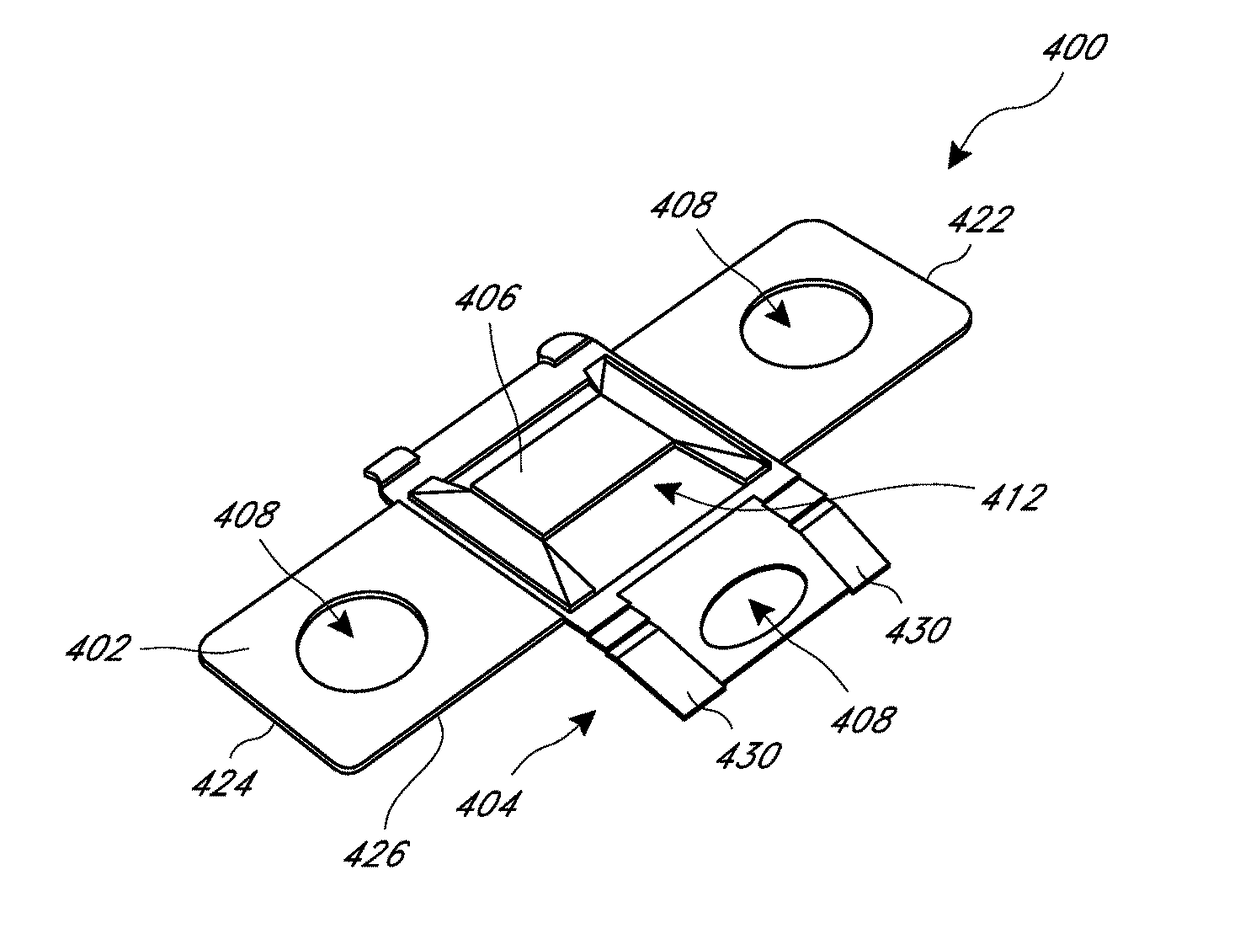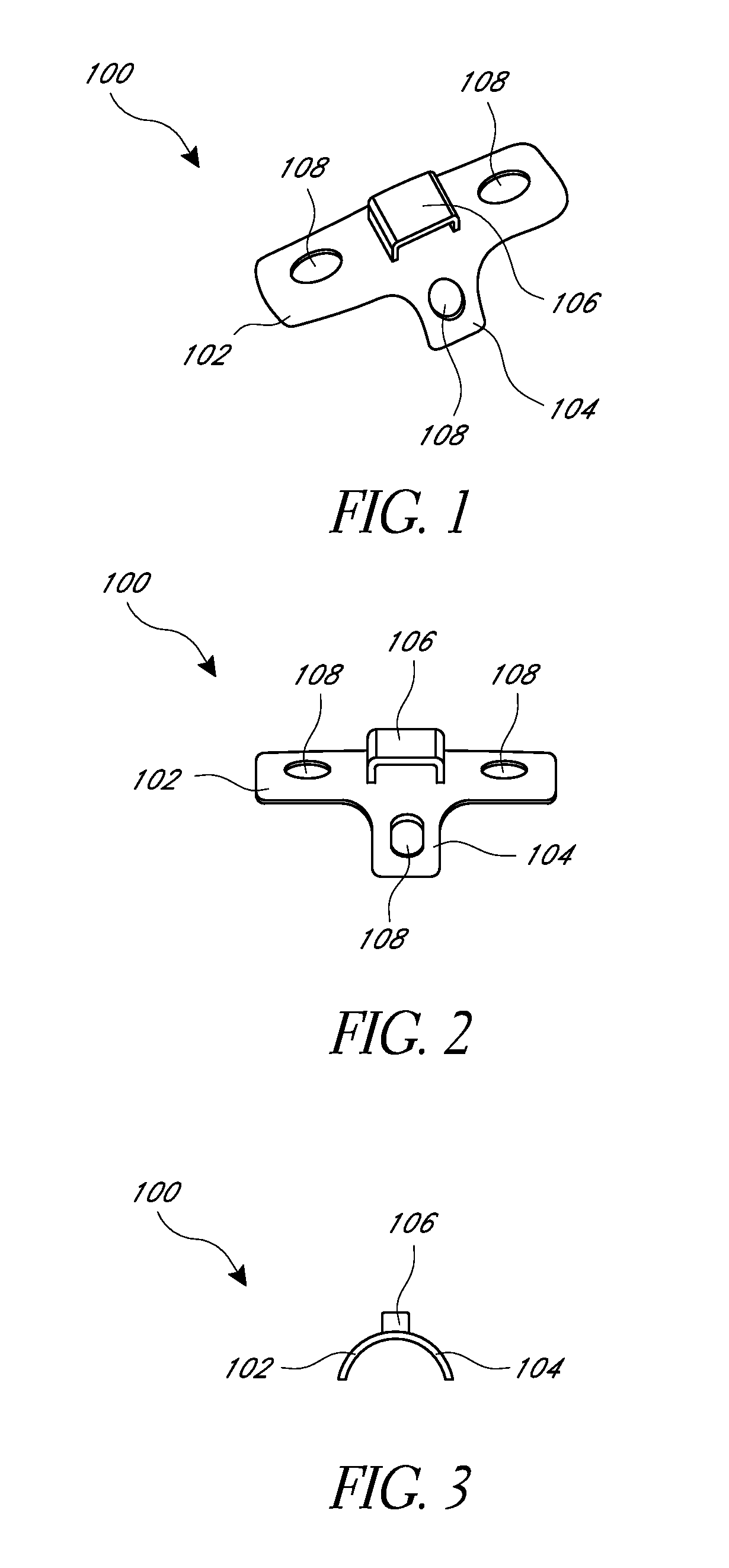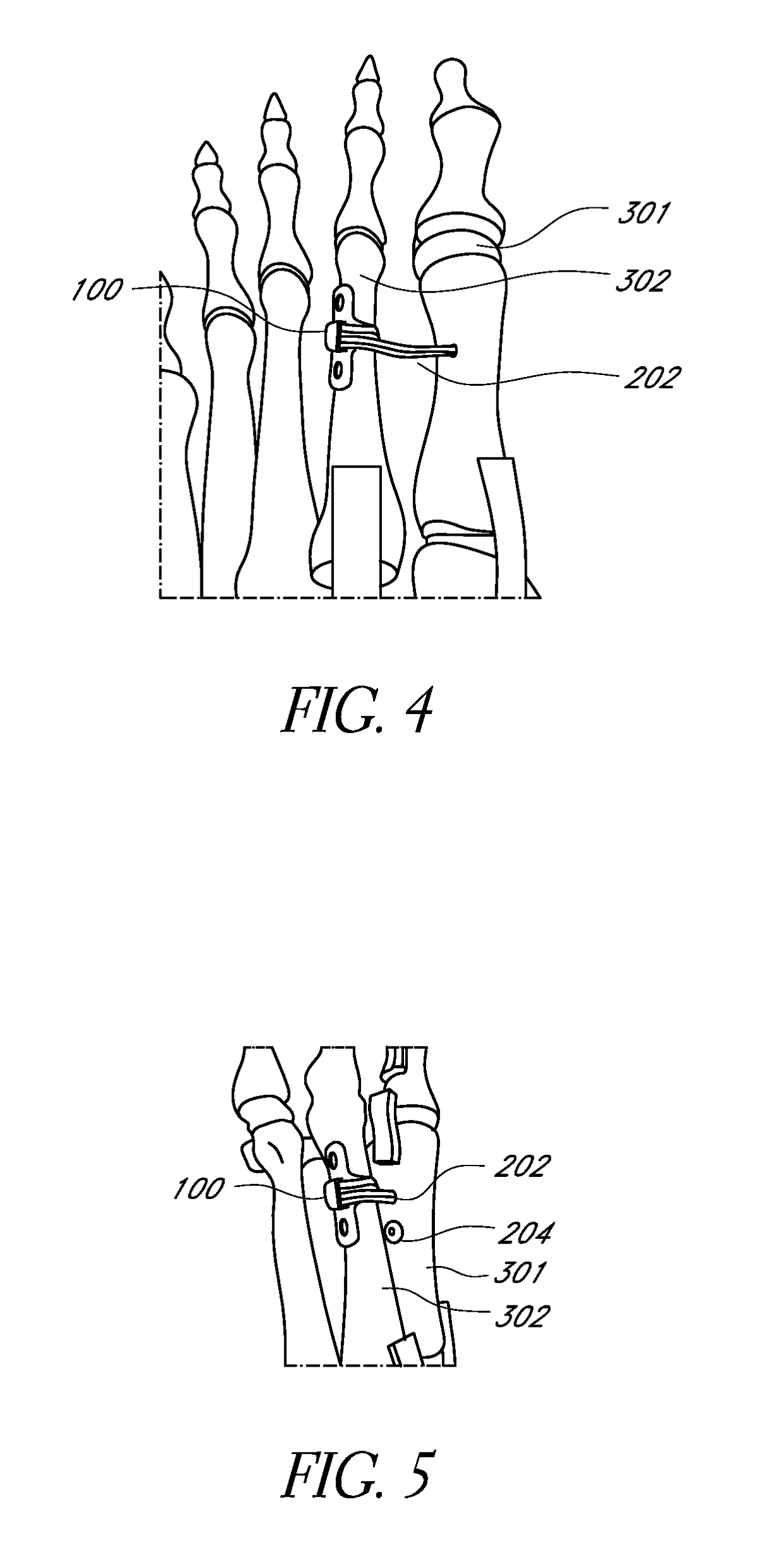Bone plate for reducing angular bone deformity and method of using
a bone plate and angular bone technology, applied in the field of bone plate, can solve the problems of severe weakening of the bone, difficult drilling of the centerline of the second metatarsal, and more difficult procedures, so as to correct and reduce angular bone deformities, the effect of reducing angular bone deformities
- Summary
- Abstract
- Description
- Claims
- Application Information
AI Technical Summary
Benefits of technology
Problems solved by technology
Method used
Image
Examples
Embodiment Construction
[0039]In various situations, a surgeon may need or wish to tie (or lasso) cerclage material around one bone then secure the other end of the cerclage material (under tension) to an adjacent bone for stabilization or to reduce an angular deformity between the two bones. However, if the cerclage material is tied around a bone and is in direct contact with that bone, then there is risk of fracturing that bone once tension is placed on the cerclage material. Furthermore, when some cerclage material, such as suture tape, is tied around unprotected bone and then anchored to another bone using a tethering technique, any motion between the two bones can cause friction between the cerclage material and the unprotected bone. This friction can cause adverse effects such as periosteal reaction (rope burn) and possible stress fracture. The winged bone plates described herein advantageously protect the bone from two harmful forces: tension and friction. The elongate plate body distributes tension...
PUM
 Login to View More
Login to View More Abstract
Description
Claims
Application Information
 Login to View More
Login to View More - R&D
- Intellectual Property
- Life Sciences
- Materials
- Tech Scout
- Unparalleled Data Quality
- Higher Quality Content
- 60% Fewer Hallucinations
Browse by: Latest US Patents, China's latest patents, Technical Efficacy Thesaurus, Application Domain, Technology Topic, Popular Technical Reports.
© 2025 PatSnap. All rights reserved.Legal|Privacy policy|Modern Slavery Act Transparency Statement|Sitemap|About US| Contact US: help@patsnap.com



